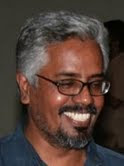TWENTY20 CRICKET

Television, Cricket and Media Frenzy
Another wave of cricket euphoria is sweeping through the subcontinent. India's Twenty20 world cup success has literally swung everyone off their feet and minds with the whole country gloating over it like an adolescent. Though India played much better and exciting cricket against Australia and South Africa, the final was 'the most important' victory obviously because it was against our arch-other, Pakistan. One could virtually feel the nervousness and tension of the players out in the field during the match. Evidently both of them were not playing a game; rather the game was playing them with the wishes, prayers and dreams of millions of their countrymen looming over their heads. Rules of the game do not apply here; it is either glory or ignominy. You are either paraded through the streets, or lynched in public. (The bitter experience that both the teams faced after their unceremonious exit at the WCC should be still fresh in their memory) So, the frenzy that television whipped up cannot just wind up with the end of the game. It went on and on through the night and the following days, with the channels vying with each other to follow the players to their homes. It was as if the channels, akin to adolescents, couldn't come to terms with the fact that the tournament was over.
Witnessing the kind of joy and exuberance in and of the media, one gets the feeling that it was also a desperate exercise in public memory. Television constantly needs such euphoric moments to create an illusion of participation through spectacles. On the one side are the pressures of entertainment industry to innovate new forms of entertainment and thus advertisement revenue. On the other is the frantic effort of the audience to hold on to something, anything that goes beyond the transience and everydayness of life and media that suffocates them. Such moments naturally need its heroes, villains or martyrs – and this game constantly renews itself to cater to this inexorable hunger - of the fans as well as the media. From its often result-less 5 Day version, here cricket has taken the shape and size of a film show, a thriller lasting for three and half hours!
As Rohit Brijnath puts it very insightfully, "it's a game that is the remarkable mix of many stolen parts; it has borrowed the idea that plot is irrelevant from Van Damme movies, it's scrounged the concept of "music at changeovers" from the US Open Tennis; it's spawned its own version of baseball's dancing girls; it's crude version of football's penalty shoot-out, it's got a hockey-style on-ground bench, and bears a resemblance to golf with its bizarre rules.. Its intensity is unrelenting, its no-dawdling pace so wonderfully un-cricketing, its lack of snobbery invigorating, its demand for nerve exhilarating, its improvisation intriguing" (It is Excitable, Unruly, Unsubtle and Fun, Sportstar, September 29. 2007). So, is the game of cricket imitating television, which is a media that picks from any genre, mixes and shuffles them at will, always trying to keep the frenzy alive at any cost?
And he goes on to say, "Twenty20 is the future, but it's also the past. The game we embrace now is the one we left behind. Every shot played by Yuvraj that night against England was only an echo of our boyhood..Gully cricket was not about accumulation but explosions..We played Twenty20 before it was invented" Maybe it is this very immediacy, intimacy and spontaneity, and the boyishness of the players (players like Hayden and Gilchrist look like Dinosaurs) that prompts us to take on to it so easily and compulsively. Maybe it is this feeling of participating in yet another reality show, where your gully and neighbourhood are the arena, that makes it so TV-friendly, full of excitement and frenzy as it happens, and totally forgotten the moment the wave passes by. So, it may not be a coincidence that this victory was constantly compared with film narratives like Lagaan, Chak De India, etc where a rabble comes together to gain victory. Is art/media imitating life or is it the other way round?





